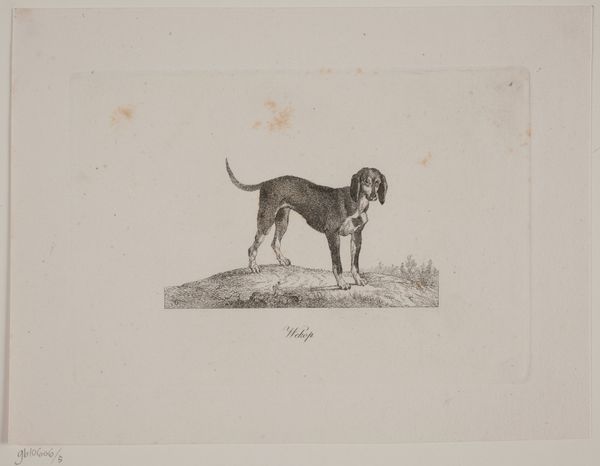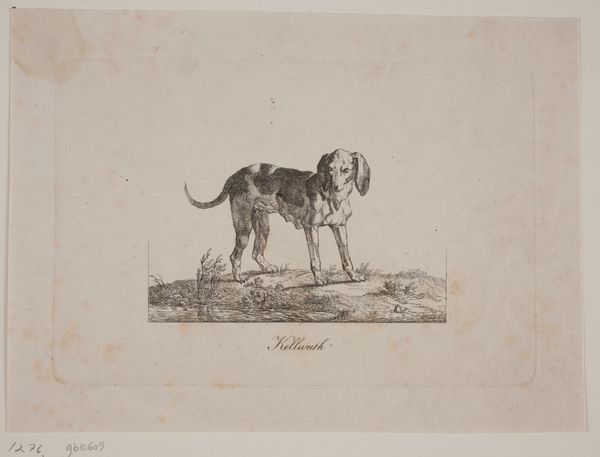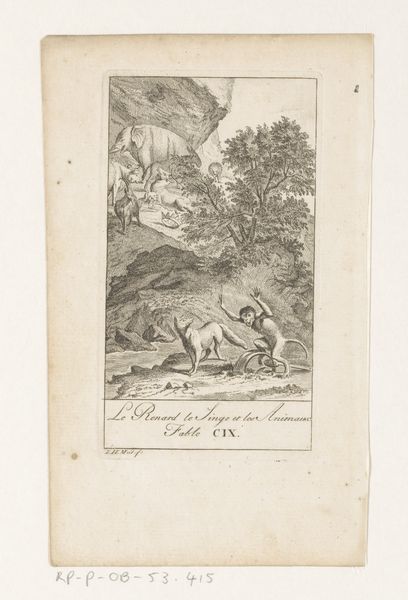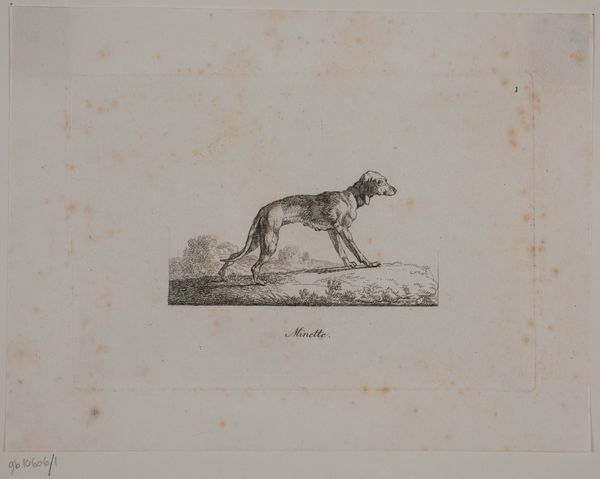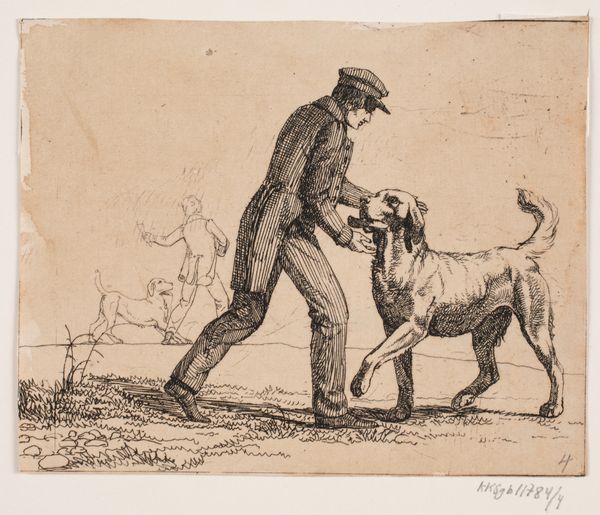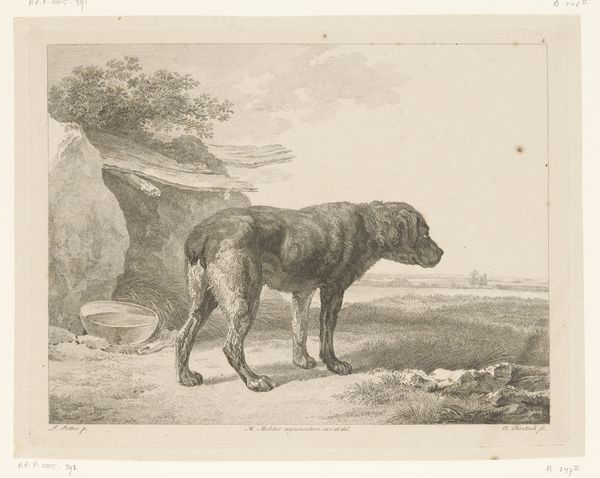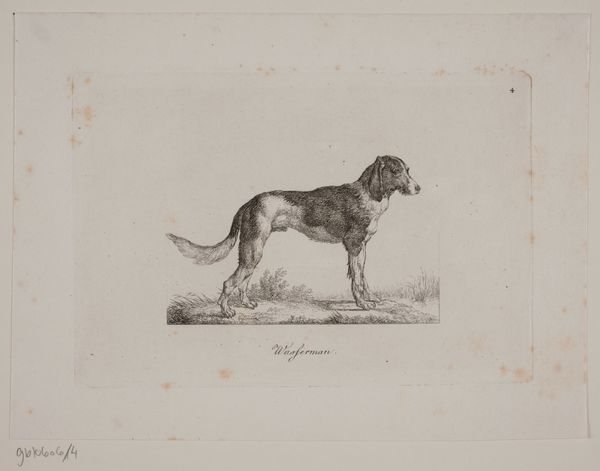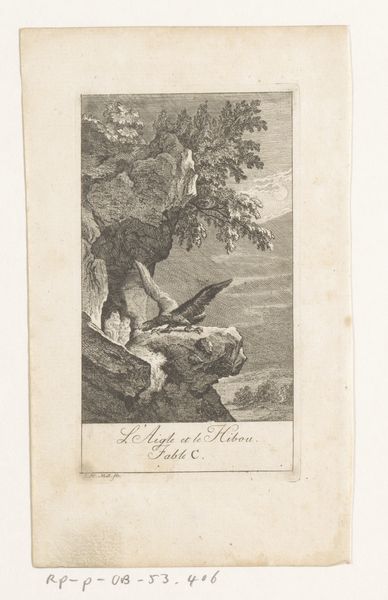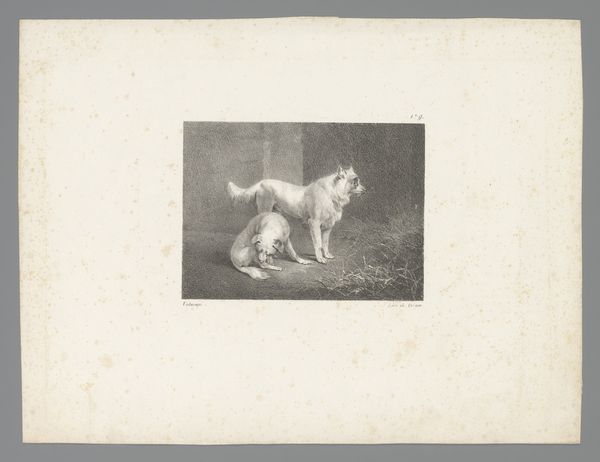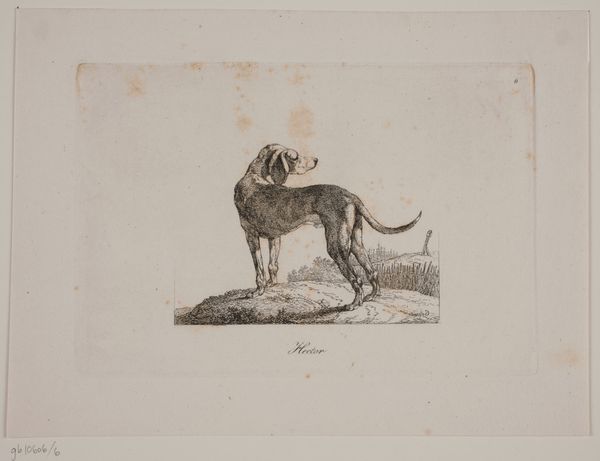
print, engraving
#
light pencil work
#
animal
# print
#
pencil sketch
#
dog
#
landscape
#
genre-painting
#
engraving
Dimensions: height 105 mm, width 129 mm
Copyright: Rijks Museum: Open Domain
Curator: Eugène Verboeckhoven's "Fable of the Wolf and the Dog," dating back to 1830 and residing here at the Rijksmuseum, offers a simple yet evocative scene. It's an engraving. Editor: It strikes me as a stark commentary on domestication. The stark monochromatic contrast throws the differing stances and physicality of the animals into sharp relief, don't you think? The dog almost looks grotesque compared to the wild wolf. Curator: Precisely! That "grotesqueness," as you put it, stems from its domestication. Think about what the dog represents – security perhaps, but also servitude. Its collar is a potent symbol. While the wolf may face the harsh realities of nature, it retains its freedom, a central theme in many fables that often question our societal choices. Editor: The use of line here is so delicate, particularly around the landscape elements, creating an interesting foil to the figures which feel much more sharply defined. Does the setting play a symbolic role too, I wonder? That vague settlement in the background on the horizon? Curator: It’s more than a backdrop. The rudimentary landscape implies human presence. That the settlement is hazily rendered could indicate an uncaring owner who lets this domesticated beast roam wild. The engraver creates a dialogue between civilization and the untamed world through contrasting light and shadow. Note that even the *choice* of pairing a wolf with a dog signals their conflict, echoing traditional symbolism related to nature versus nurture. Editor: The semiotic tension really does permeate the image. Even their positioning; the domesticated dog with its back toward the settlement is confrontational compared to the alert posture of the wolf! So much narrative implied in this unassuming sketch. I'm suddenly intrigued by how different cultures might perceive this relationship – does this fable have a specific cultural inflection? Curator: That’s precisely what’s so compelling about visual symbols: their meanings shift, expand, and sometimes even reverse across cultures and over time, revealing collective anxieties and desires. Editor: Agreed. What I initially perceived as a simple visual dichotomy has evolved into a rather rich reflection on our choices and inherent values, particularly around control and freedom. Curator: Indeed, seeing this engraving is also encountering cultural memories surrounding domesticity and our relationship with the natural world.
Comments
No comments
Be the first to comment and join the conversation on the ultimate creative platform.

